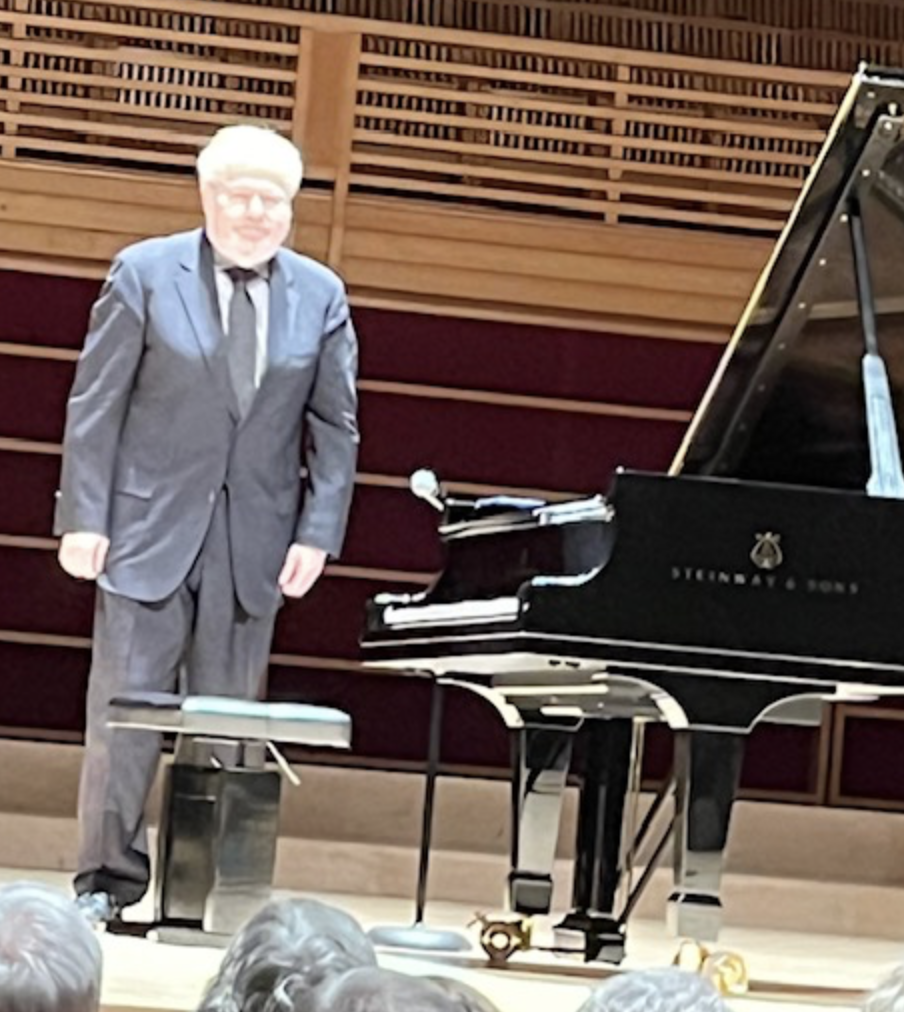|
Symphony
FROM THE NEW WORLD TO THE OLD WORLD
by Peter Lert
Saturday, June 14, 2025
Chamber
MC2 DUO RECITAL CLOSES 222'S SEASON
by Terry McNeill
Saturday, June 14, 2025
Choral and Vocal
CANTIAMO SONOMA'S LUSCIOUS A CAPELLA SINGING IN SEASON ENDING CONCERT
by Pamela Hicks Gailey
Sunday, June 8, 2025
Symphony
SRS SEASON ENDS WITH RESOUNDING TA-TA-TA-BANG
by Terry McNeill
Sunday, June 1, 2025
Symphony
YOUTHFUL VIRTUOSITY ON DISPLAY AT USO'S MAY CONCERTS
by Peter Lert
Saturday, May 17, 2025
Symphony
MYSTICAL PLANETS AND LIVELY GERSHWIN ORTIZ AT FINAL SRS CONCERT
by Peter Lert
Sunday, May 4, 2025
Symphony
VSO'S CONCERT MUSIC OF TIME, MUSIC OF PLACE
by Peter Lert
Sunday, April 27, 2025
VOCAL ELEGANCE AND FIRE AT THE 222'S RECITAL APRIL 26
by Pamela Hicks Gailey
Saturday, April 26, 2025
CANTIAMO SONOMA SINGS AN INSPIRED GOOD FRIDAY MOZART REQUIEM CONCERT
by Pamela Hicks Gailey
Friday, April 18, 2025
DRAMATIC SHOSTAKOVICH SYMPHONY CLOSES PHILHARMONIC'S 25TH SEASON
by Terry McNeill
Sunday, April 13, 2025
|
 |
 Emanuel Ax Oct. 24 in Weill |
LARGE AUDIENCE HEARS AX IN WEILL PIANO RECITAL
by Terry McNeill
Thursday, October 24, 2024
Piano recitals are now rare items on the North Coast, with just Jon Nakamatsu’s Dec. 8 SRJC concert left on the 2024 calendar. So it was a happy development to see 800 attending Oct. 24 in Weill for the Emanuel Ax recital and a balanced program of Schoenberg, Beethoven and Schumann.
The two Beethoven Sonatas from Op. 27 were expected to be crowd pleasers, and they were, beginning with the E Flat’s fine legato and crisp scales over 16 minutes, the tempos just right. Tonal control is critical here and the work received a clean, steady and mildly underplayed interpretation, with the pianist occasionally pointing to the composer’s humor.
Lyricism was central to the C-Sharp Minor Sonata’s opening movement, the “moonlight” sobriquet easily encountered with the needed steady tempo flagging once. All through the recital Mr. Ax’s tempos were judicious, often working to the music’s advantage and sometimes not. These dilatory tempos were not from a lack of technical capability but seemingly this evening’s mood and inclination of the performer. The Allegretto was slow and missed the dance scherzo-like humor, and the explosive nature of the Presto’s tremolos and Staccato was effectively played without the final measure of drama potency and speed. Pedaling was heavy at the expense of articulation.
Mr. Ax is perhaps the grand signor of senior American pianists, and in this weighty recital chose for the second half’s pièce de résistance Schumann’s C Major Fantasia, Op. 17. The majestic emotions and beauty of the 1836 work call for monumental realization pianism outside of the usual, bordering on the need to take a few technical chances and explore at times interpretative preferences and musical ideas recalling “Golden Age” virtuosi.
The opening movement had an “old shoe" warmth with the pedal overlapping phrases and heavy legato, pianissimos lovely but any left-hand accented figurations were missing. Balanced and beautiful playing continued in the great March and the famous challenge of contrary octaves near the end were accurate, albeit on the slow side. But…then Mr. Ax moved away from a conventional interpretation playing several inner voices and resoundingly doubling the left-hand B-Flat chord before the final bar. Bang.
Following this, he did something that again harkens back to long ago styles. The usual March’s conclusion has pedal released, but the pianist kept the damper pedal down for a long, long fermata. After many seconds, he never released it and began the Langsam softly in an elegant enharmonic modulation. Time almost stood still.
The poetical finale was played in a flowing unfolding of beautiful sound with two resounding climaxes, perhaps the entire recital’s best playing, and the many key modulations were deftly controlled. Register balancing was perfection. The mesmerizing final three chords were played with pedal.
Of course a standing ovation broke out, and after two short curtain calls the artist played an encore of a Chopin Mazurka, I think the A-Flat Major, Op. 24, No. 3.
Mr. Ax has a charming no nonsense stage manner, a little self-deprecating, and a melodious voice. In each half he played two short sets of Schoenberg works, the Six Little Pieces, Op. 19, and the Three Piano Pieces, Op. 11. For the latter he repeated Leonard Bernstein’s comment that the Op. 11 Schoenberg (1908) sounds like Brahms with wrong notes.
|

